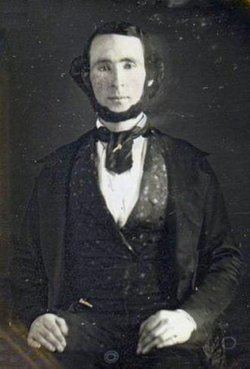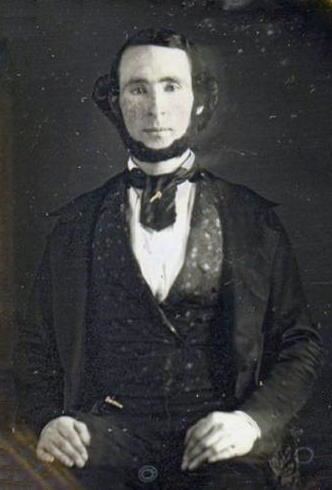Name William Smith | ||
 | ||
Education | ||
William Wallace Smith Bliss (August 17, 1815 – August 5, 1853) was a United States Army officer and mathematics professor. A gifted mathematician, he taught at West Point and also served as a line officer.
Contents
- Early life and education
- Military career
- Intellectual pursuits
- Marriage and family
- Political career
- Legacy and honors
- References

In December 1848 Bliss married Mary Elizabeth Taylor, youngest daughter of the newly elected US President Zachary Taylor, whom he would serve as Presidential Secretary. Five years later Bliss contracted yellow fever in New Orleans and died at the age of 37.
Having become interested in the various Native American tribes, Bliss learned a number of their languages and studied their cultures. He was a member of the Royal Society of Northern Antiquaries of Copenhagen, Denmark, and an Honorary Member of the American Ethnological Society. Gifted at languages, he was fluent in at least thirteen.
Early life and education
Born in Whitehall, New York, he was the son of Captain John Bliss (of Lebanon, New Hampshire) and Olive Hall Simonds (of Todd County, Kentucky). John Bliss was an 1811 graduate of West Point.
Military career
Bliss entered the United States Military Academy on September 1, 1829. He showed very great mathematical gifts while a student. He graduated July 1, 1833 (not yet 18 years old) as a Second Lieutenant in the 4th Infantry Regiment. It was his choice to serve in the infantry.
He served in the Fort Mitchell army garrison in Alabama from 1833 to 1834. During 1835 he was involved in operations against the Cherokee during Indian Removal, which moved most of them to Indian Territory west of the Mississippi River.
From October 2, 1834 until January 4, 1840, Bliss served as Assistant Professor of Mathematics at West Point. As a Captain, he served as Chief of Staff from 1840 until 1841 to Brigadier General Walker Keith Armistead, the Commanding General in the Seminole Wars. He served at Fort Smith, Arkansas, and at Fort Jesup, Louisiana, as a staff officer.
In 1845, Bliss took part in the United States military occupation of the Republic of Texas, prior to its annexation. Between April 1846 and November 1847, he took part in the Mexican War, including fighting in the battles of Palo Alto, Resaca de la Palma and Buena Vista. He was brevetted to Major in May 1846, and brevetted to Lieutenant Colonel in February 1847 for gallant and meritorious service.
During his entire service in Texas and Mexico, he served as Chief of Staff to Major General Zachary Taylor. Bliss was noted for his efficiency and skills as a high-level aide. His writing was simple, elegant, vigorous, and picturesque. He was cheerful and popular with the public.
Intellectual pursuits
He received the honorary degree of master of arts from Dartmouth College, New Hampshire, in 1849. He was a member of the Royal Society of Northern Antiquaries of Copenhagen, Denmark, and an Honorary Member of the American Ethnological Society.
He had a talent for languages, and was fluent in at least thirteen. George Perkins Marsh, the philologist, said that Bliss was the best linguist in America.
Marriage and family
On December 5, 1848, at Baton Rouge, Louisiana, Bliss married Zachary Taylor's youngest daughter, Mary Elizabeth (1824-1909; called "Miss Betty" after Taylor's election as President).
Political career
Taylor appointed Bliss as Private Secretary to the President (he was able to take leave from the Army for this assignment).
As the President's wife took no part in formal social events, she delegated the social role to their daughter Mary Elizabeth Bliss, who effectively became the First Lady of the White House at the age of 22. The popular young couple seemed destined to become powerful figures in Washington.
The President died suddenly in July 1850. Bliss and his wife Mary accompanied her widowed mother to Pascagoula, Mississippi. She died there in 1852, at the home of another daughter.
Bliss was assigned as Adjutant-General of the Western Division of the Army. Following a summer visit to New Orleans on behalf of University of Louisiana, Bliss contracted yellow fever. He died at Pascagoula on August 5, 1853, aged 37. He was buried at Girod Street Cemetery (defunct), New Orleans. A century later, his remains were moved to Fort Bliss National Cemetery in Texas.
